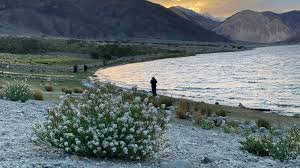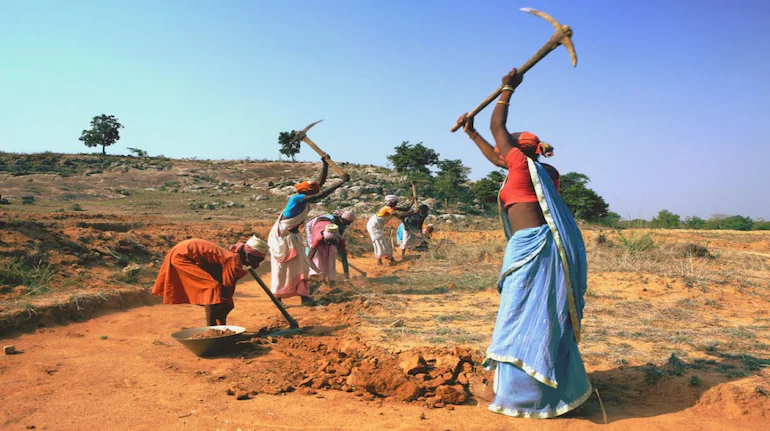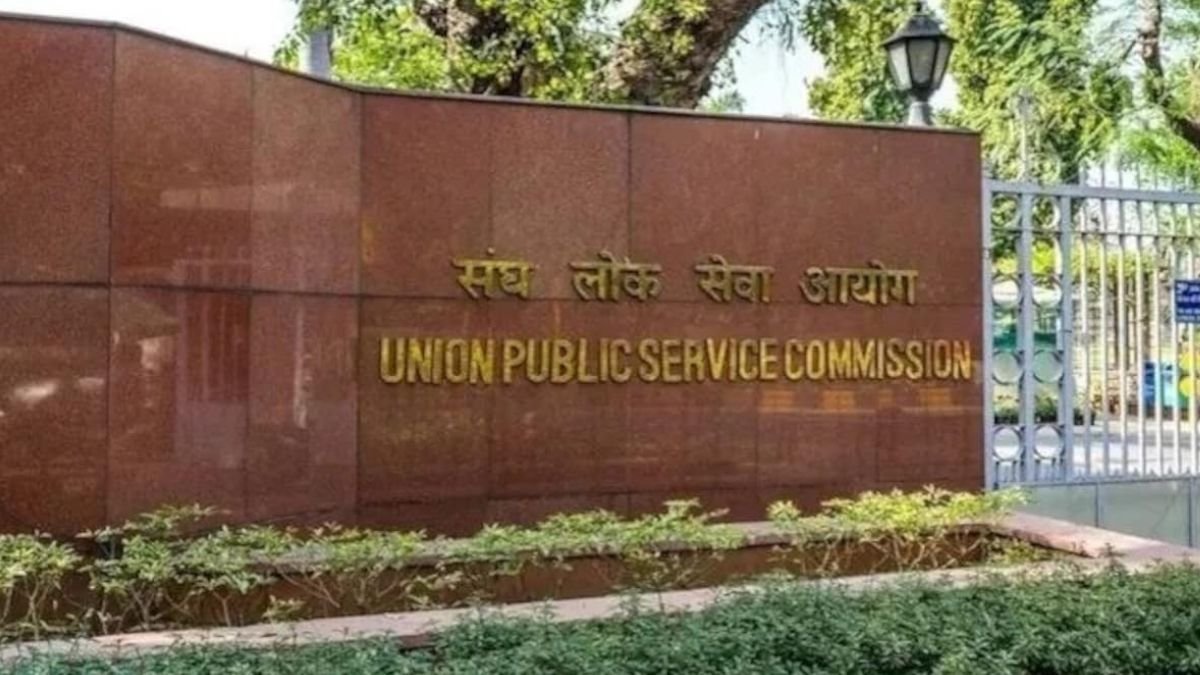Why in the News?
- Recent protests in Leh following the abrogation of Article 370 and the creation of Union Territory (UT) status for Ladakh turned violent, resulting in at least four deaths and multiple injuries.
- The unrest highlights long-standing demands for representation, autonomy, and protection of cultural, ecological, and linguistic heritage in Ladakh.
- Both Leh and Kargil districts, historically divided by religion and politics, have united to press the Centre for empowerment, local governance, and socio-economic development.
Key Highlights
- Historical Background and Strategic Importance
- Ladakh, a region bordering China and Pakistan, has always been a strategic frontier for India.
- During major conflicts (1947, 1962, 1971, and 1999 Kargil War), the Ladakh Scouts played a crucial role in defending the nation, earning the title of “Snow Warriors.”
- Leaders like Colonel Chhewang Rinchen, Sonam Wangchuk (army officer in Kargil), and statesman monks like Kushok Bakula Rinpoche contributed to national integration and preservation of Ladakh’s cultural heritage.
- Union Territory Status and Initial Developments (2019)
- The abrogation of Article 370 granted Ladakh the status of Union Territory, giving it direct administrative links to Delhi.
- This move was aimed at empowering the local population, providing direct governance without interference from Jammu and Kashmir.
- Initial centralisation was necessary due to geopolitical sensitivities and strategic importance at the confluence of the Chinese and Pakistani borders.
- Emergence of Grievances (Post-2019)
- Despite some steps, like domicile-based employment policies and recognition of local languages, the devolution of powers to the Ladakh Autonomous Hill Development Councils (LADHCs) has been incomplete.
- Questions regarding land ownership, large-scale energy projects, and ecological preservation remain unresolved.
- Delayed dialogue led to youth-led protests, strikes, and public unrest in Leh, highlighting the demand for representation, autonomy, and cultural protection.
- Political Unity and Local Representation
- The Leh Apex Body and Kargil Democratic Alliance, historically adversaries, have forged an unprecedented common cause, uniting Buddhists and Muslims.
- The Centre is now encouraged to engage in dialogue with these local bodies, youth, women, and remote communities to ensure inclusive decision-making.
- Experts suggest that collective leadership should be preferred over individual icons like Sonam Wangchuk in political negotiations to avoid mistrust and polarization.
- Balancing Development, Security, and Ecology
- Mega projects, such as solar energy initiatives, must not displace fragile ecosystems or pastoral livelihoods.
- Traditional industries like Pashmina production must be preserved alongside renewable energy and infrastructure development.
- Proper empowerment of Ladakhis strengthens India’s strategic frontier, ensuring national security, constitutional integrity, and ecological sustainability.
Key Terms
- Article 370
- Background: Article 370 was a temporary provision in Part XXI of the Indian Constitution, granting special status to the erstwhile state of Jammu and Kashmir (J&K). It was included in 1949, reflecting the unique circumstances of J&K’s accession to India after independence.
- Key Provisions:
- J&K had its own Constitution (1957) and significant autonomy.
- Parliament could legislate for J&K only on defence, foreign affairs, and communications; other matters required the state government’s concurrence.
- Indian laws were not automatically applicable—many required presidential orders.
- Residents of J&K had special rights over land and permanent residency (linked with Article 35A).
- Revocation:
- On 5 August 2019, the Government of India abrogated Article 370 through a Presidential Order and a Parliamentary resolution.
- J&K lost its special status and was reorganised into two Union Territories: Jammu & Kashmir, and Ladakh (from 31 October 2019).
- Significance:
- Before abrogation: symbolised J&K’s autonomy but also created a sense of separateness.
- After abrogation: integrated J&K fully into the Indian Union, but also sparked debates on federalism, democracy, and regional identity.
- Union Territory (UT)
- Region directly administered by the Central Government.
- Can be created by reorganizing states; may or may not have a legislative assembly.
- Governance impacts autonomy, development, and security policies.
- Ladakh Autonomous Hill Development Councils (LADHCs)
- Background:
- The demand for greater autonomy in Ladakh led to the formation of Ladakh Autonomous Hill Development Councils (LAHDCs) under the Ladakh Autonomous Hill Development Council Act, 1995.
- Two councils were established: LAHDC Leh (1995) and LAHDC Kargil (2003).
- Composition:
- Each council has 30 members – 26 elected by the people through direct elections + 4 nominated by the UT Administration.
- Powers & Functions:
- Handle local governance and development matters like health, education, agriculture, land use, and local taxation.
- Prepare and approve developmental plans and budgets.
- Background:
- Work in coordination with the UT administration for centrally sponsored schemes.
- Do not have powers over defence, law & order, and communications (which remain with the Union Government/UT Administration).
- Significance:
- Provides decentralised governance in a sensitive border region.
- Helps preserve cultural identity of Ladakh’s Buddhist and Shia Muslim populations.
- Empowers locals in decision-making while ensuring strategic oversight by the Centre.
- Sixth Schedule of the Constitution
- Provides autonomy to tribal areas in Assam, Meghalaya, Tripura, and Mizoram.
- Allows regional councils to legislate on land, resources, and local governance.
- Suggested as a model for enhancing Ladakh’s legislative autonomy.
- Pashmina and Cultural Preservation
- Pashmina wool is a traditional livelihood for Ladakhi communities.
- Protecting local industries ensures economic sustainability alongside cultural heritage.
Implications
- National Security
- Ladakh’s geopolitical location makes it a sensitive frontier requiring a balance between empowerment and vigilance.
- Engaging local populations strengthens border intelligence and strategic preparedness.
- Political Stability
- Ignoring legitimate demands risks alienation and unrest, whereas early engagement ensures democratic consolidation.
- Cross-community unity indicates potential for inclusive governance
- Socio-Cultural Preservation
- Protecting local languages, traditions, and industries maintains Ladakh’s unique cultural identity.
- Ecological and cultural preservation ensures the sustainability of livelihoods.
- Developmental Opportunities
- Infrastructure and renewable energy projects can coexist with environmental safeguards.
- Strengthened Hill Councils and adapted Sixth Schedule protections can enable locally-driven development.
- Centre-UT Relations
- Dialogue and negotiation enhance trust between Delhi and Ladakh, reducing the risk of unrest.
- Proactive governance prevents external influence or misgovernance in a sensitive frontier region.
Challenges and Way Forward
| Challenges | Way Forward |
| Rising youth unrest due to delayed empowerment | Engage Leh Apex Body, Kargil Democratic Alliance, youth, women, and remote hamlets in dialogue |
| Limited devolution to LADHCs and absence of legislative empowerment | Strengthen Hill Councils immediately and explore Sixth Schedule adaptation or UT reforms |
| Conflict between development projects and fragile ecology | Implement environmental safeguards alongside renewable energy and infrastructure initiatives |
| Historical community divides and local mistrust | Promote collective leadership and inclusive decision-making to ensure peace and cooperation |
| Geopolitical sensitivities with China and Pakistan | Integrate security, development, and empowerment strategies to maintain strategic advantage |
Conclusion
Ladakh’s recent unrest is a manifestation of deferred dialogue and aspirations for empowerment. By engaging local bodies collectively, protecting culture and ecology, and balancing strategic imperatives, Delhi can transform challenges into opportunities for long-term stability and development. Empowering Ladakh strengthens India’s frontier, fortifies democracy, and preserves the trust of its loyal citizens.
| EnsureIAS Mains Question
Q. Discuss the emerging political, social, and strategic challenges in Ladakh post-2019 Union Territory status. How can the Centre ensure development, autonomy, and national security while preserving Ladakh’s cultural and ecological identity? (250 Words) |
| EnsureIAS Prelims Question
Q. Consider the following statements about Ladakh post-2019 UT status: 1. Leh and Kargil districts have united in collective protests demanding representation and autonomy. 2. The Ladakh Autonomous Hill Development Councils (LADHCs) have been fully empowered to implement local governance. 3. Mega renewable energy projects in Ladakh must balance ecological preservation with development goals. Which of the above statements is/are correct? (a) 1 and 2 only Answer: (b) Explanation: Statement 1 is correct: Leh and Kargil have united to demand autonomy and representation. Statement 2 is incorrect: LADHCs have not been fully empowered; devolution is still incomplete. Statement 3 is correct: Development projects must ensure environmental and ecological sustainability. |
|
Also Read |
|
| UPSC Foundation Course | UPSC Daily Current Affairs |
| UPSC Monthly Magazine | CSAT Foundation Course |
| Free MCQs for UPSC Prelims | UPSC Test Series |
| ENSURE IAS NOTES | Our Booklist |





